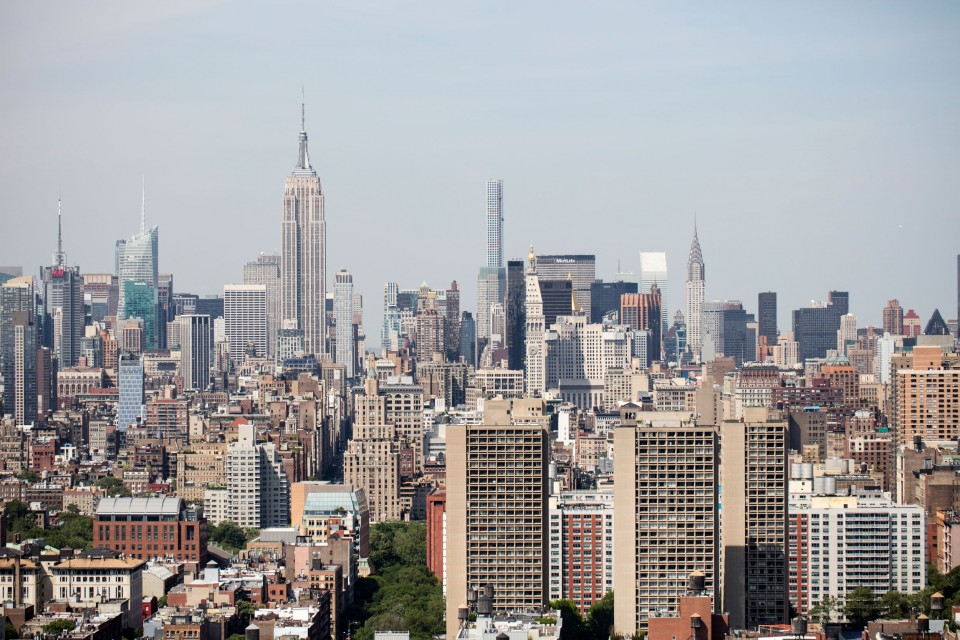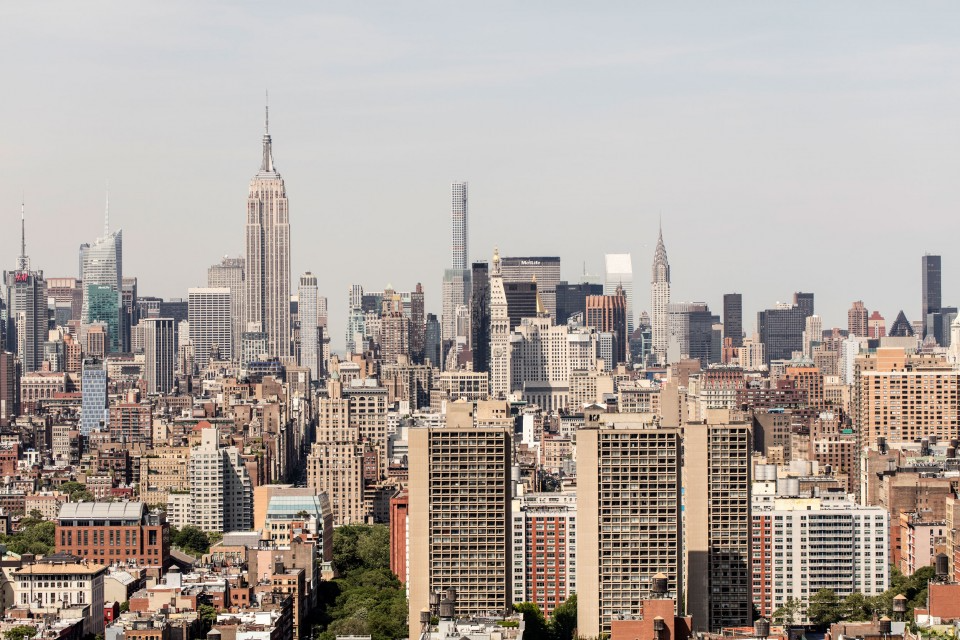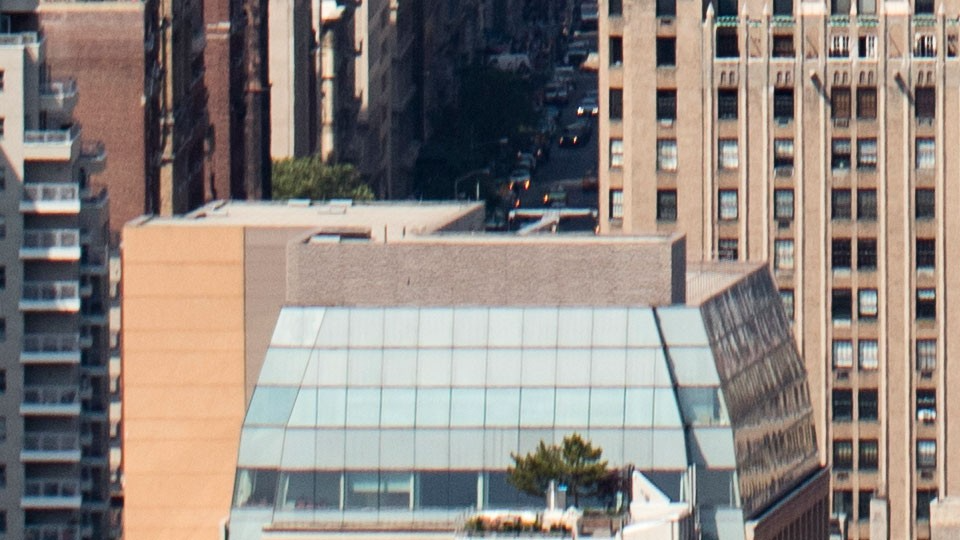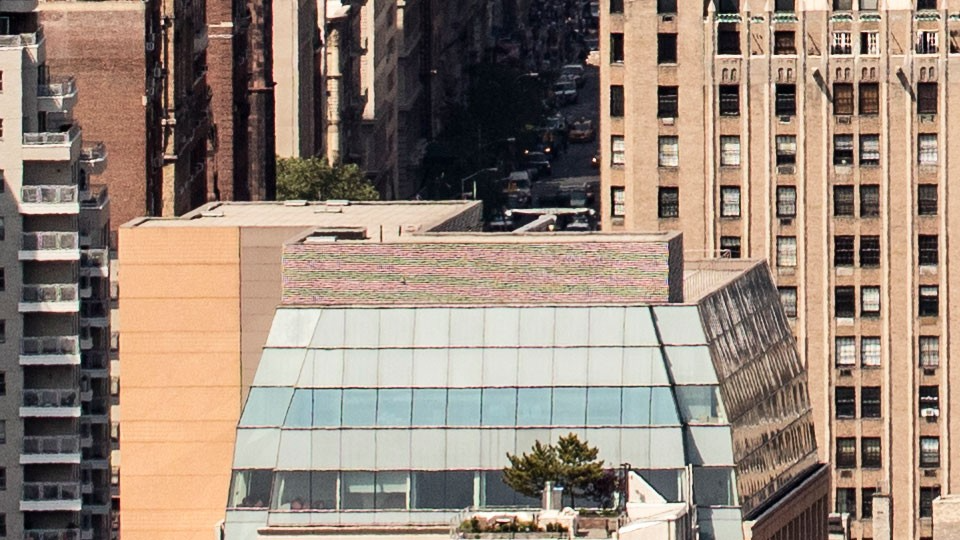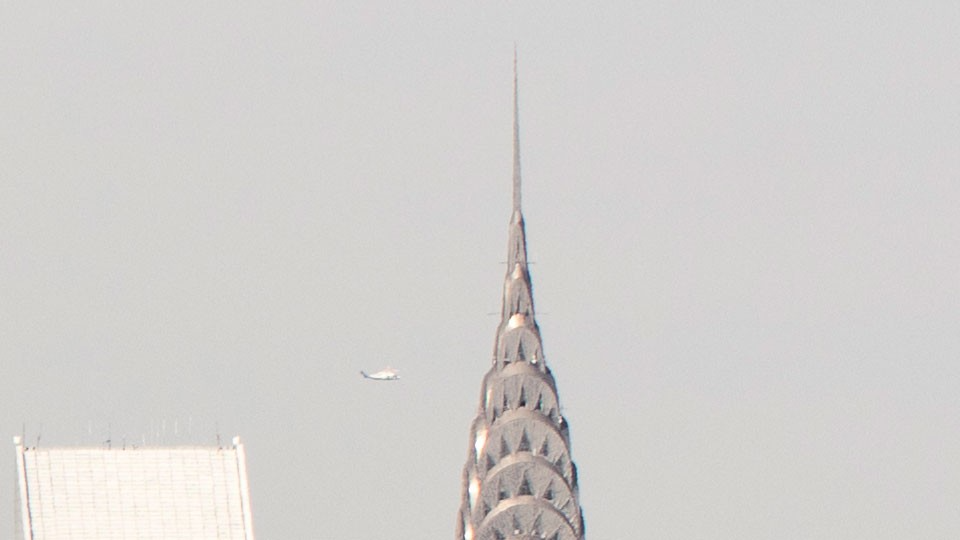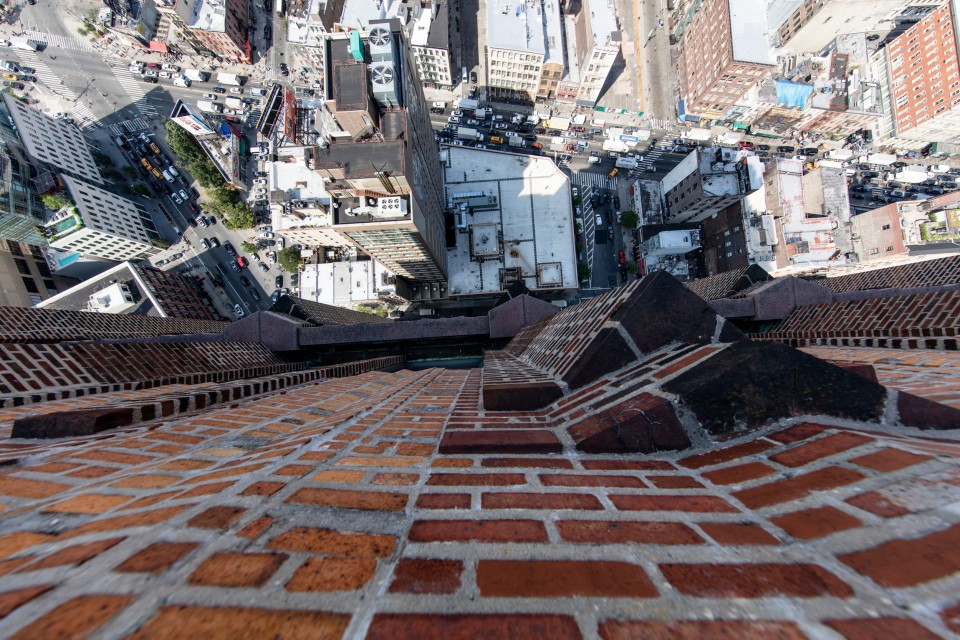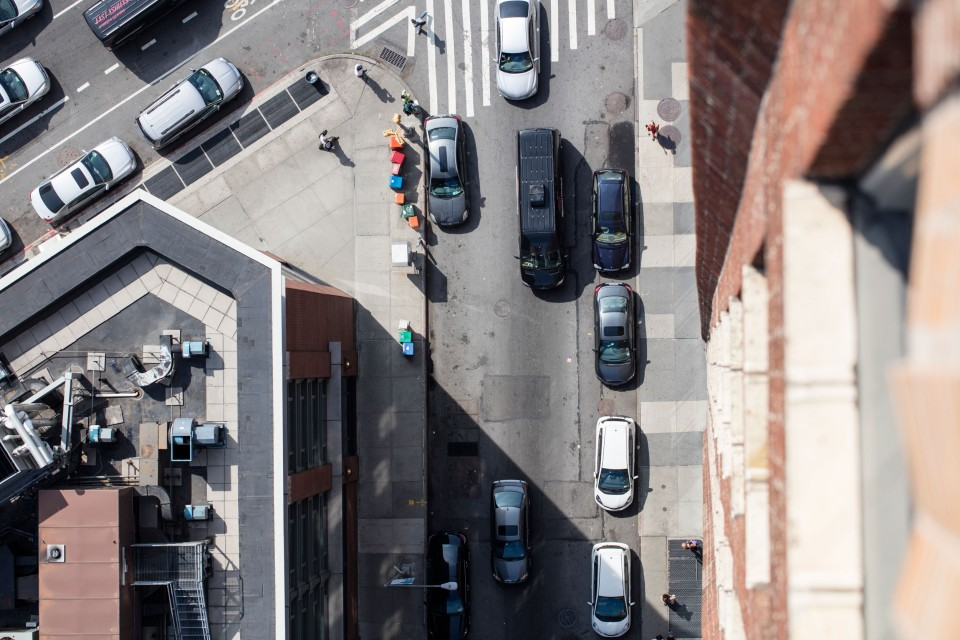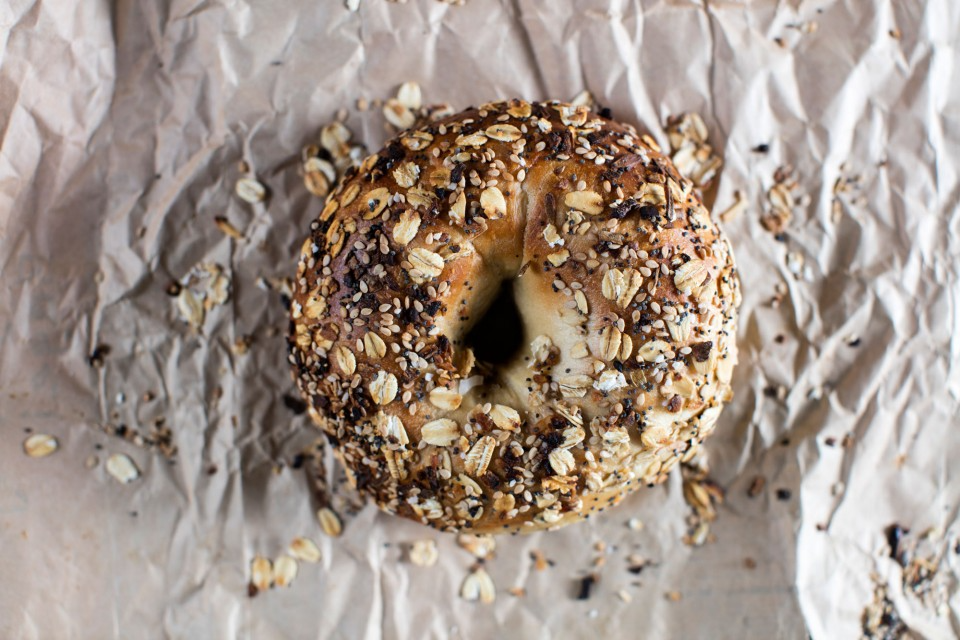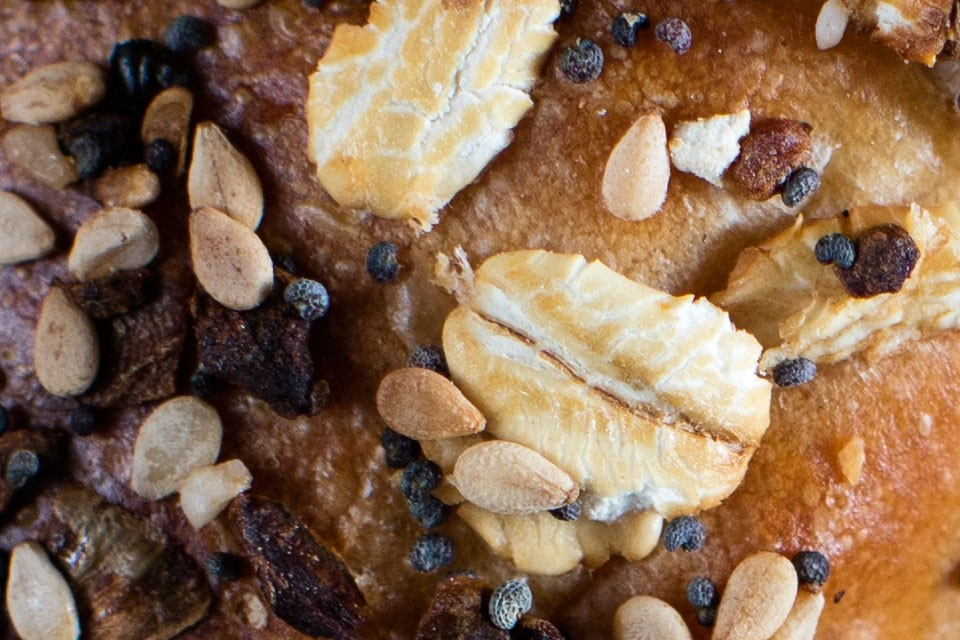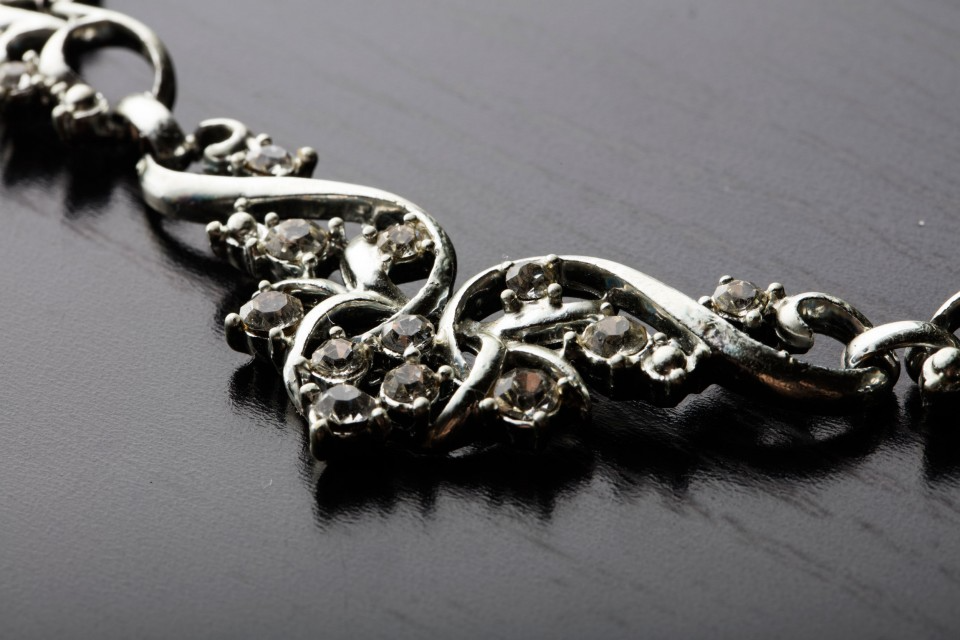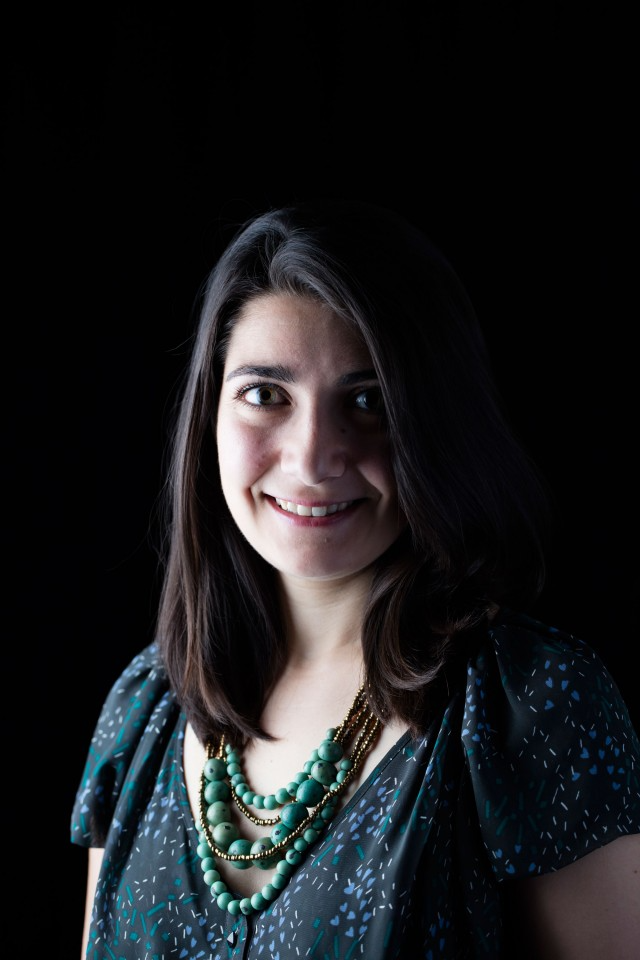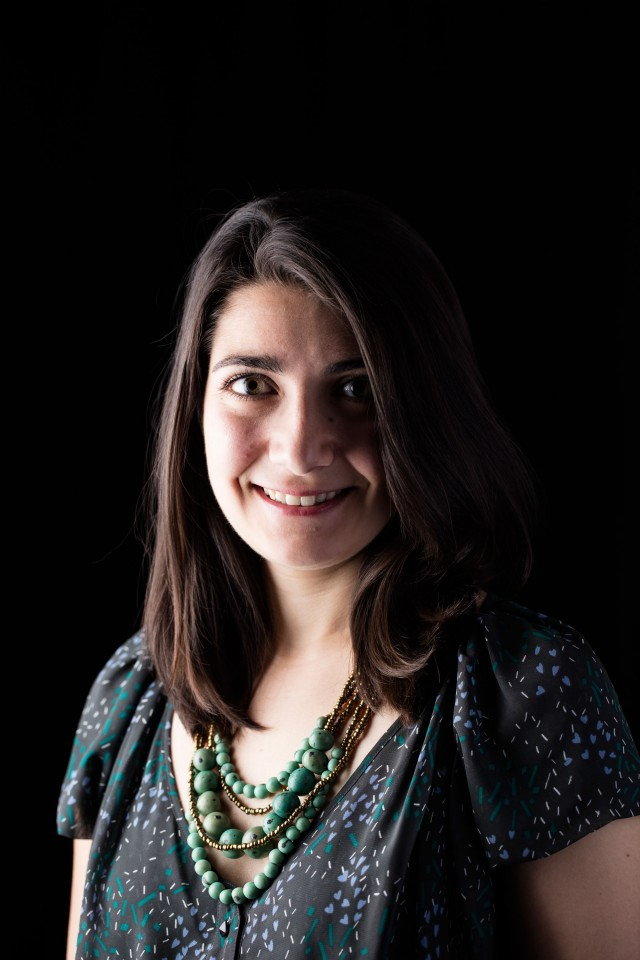Canon EOS 5DS R DSLR Camera (Body Only)
Providing the full resolving power of its new sensor, the EOS 5DS R DSLR Camera from Canon is a variant of the 5DS with the sensor's low-pass filter rendered neutral. By cancelling the effect of the filter, the 50.6MP sensor is enabled to deliver an even higher resolution with more intricate details. The potential downside to this is that the cancellation function brings with it the greater possibility of moiré and other color artifacts. This is a
- Brand: Canon
- SKU: 5
Learn More
Designed for Detail: The Canon EOS 5DS & 5DS R DSLRs
By Shawn C. Steiner |
6 years ago
37343
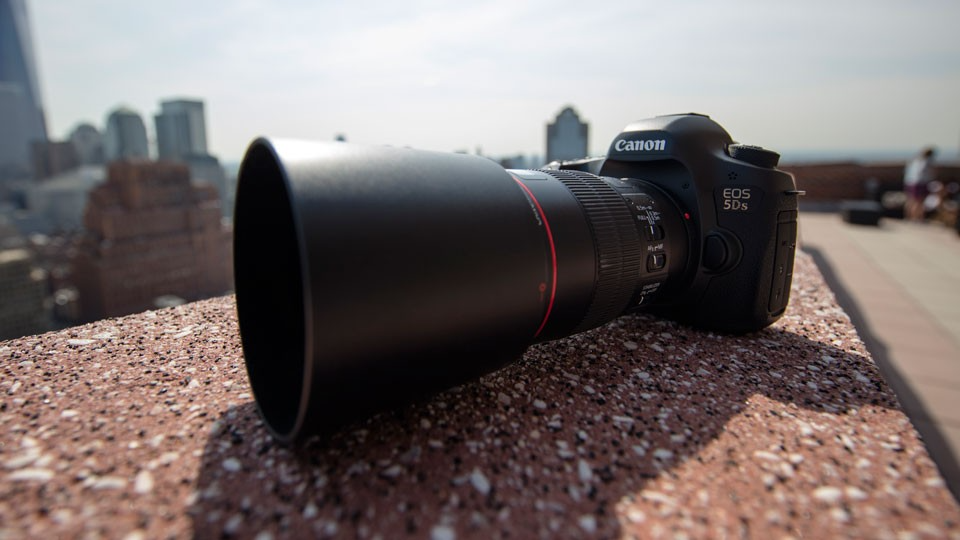
The ultimate in resolution for full-frame DSLRs: this is what Canon’s latest 50-megapixel 5DS and 5DS R offer users. These cameras take a huge leap forward in resolution for the legendary 5D series and, when one looks at the files, they are impressively sharp and detailed. I was also able to observe the main differences between the two models and zoom almost endlessly into those images. It was a fun experience, and anyone looking for maximum resolution and detail will not have to search for much longer.
To Low-Pass or Not to Low-Pass
Most DSLRs, including the 5DS, use a low-pass filter to eliminate false colors and moiré that is created when shooting fine repeating effects or patterns, such as bricks or clothing in small check or hound’s-tooth print, for example. This filter works by splitting the point of light both horizontally and vertically before it reaches the sensor. The 5DS R implements a different filter array, which recombines the light back into a single point, meaning that light reaches the sensor as if it had never been altered, resulting in the highest possible resolution and sharpness.
This can result in increased moiré, as you can see here. On the left is the 5DS, which still creates a bit of moiré in incredibly difficult situations but when compared to the 5DS R on the right, it handles it a bit better. Another thing to look out for is the increase in sharpness of the 5DS R’s image.
While many users may see the higher sharpness and resolution as a benefit, the increased risk of spatial aliasing, moiré, and color shift is much higher. This makes the 5DS R much better for users who have complete control over their scene, require the highest resolution possible, and/or have time to spend working on images during post processing, while the 5DS will work for most environments without issue.
Frankly—and this is from using the camera—I found that it is difficult to get either camera to create moiré. I photographed most of the usual culprits and found that by the time I zoomed in all the way, you can see every thread and every brick, although I did see some moiré in several cityscapes containing distant brick buildings, shot with the 5DS R. Every one of the 5DS images were clean, proving that the 5DS R is more prone to experiencing moiré. Whether the extra resolution is worth it to you is the real choice.
Upgraded Design and Detail-Oriented Features
Moving into the ultra-high-megapixel arena brings with it some new challenges. One such challenge is mirror and shutter shake, which has been counteracted with an advanced mirror-control mechanism and a user-selectable shutter release time delay for mirror lockup. This mechanism uses a Mirror Vibration Control system, which drives the mirror with a precise motor and cams, as opposed to the springs found in conventional DSLRs. This suppresses the impact of the mirror and limits its effects on the image. And it does make a difference. When shooting, I felt an exceptionally smooth shutter release, and as a side benefit, it also seemed to be much quieter than other cameras. In addition to this, the base plate and tripod socket have been fortified to reduce vibrations and make sure that your equipment is secure.
Canon has implemented a new Fine Detail picture style, which offers much greater control over the sharpening of each photo, in addition to creating slightly more vivid colors and more well-defined edges. It adds options for Strength, Fineness, and Threshold for dialing-in the sharpening for each subject. It is important to note that while RAW files are not directly affected, it will make a difference in the final output of JPEGs and in the preview on the rear LCD.
Image Quality

A garden-fresh salad captured with the 5DS R
Let’s just say right off the bat that the resolution is higher than anything you have ever seen from a full-frame DSLR. The 50-megapixel CMOS sensor creates files with dimensions of 8688 x 5792 pixels, allowing users to print truly large photographs without needing any interpolation. Perhaps the most enjoyable part of shooting is discovering how far you can zoom into your shots, and then counting the iterations on your bagel's poppy seeds—which is totally possible.
When your subject or scene is lit well, these cameras really shine. Take note of the “when lit well” phrase here. These are not cameras for going out at night and bumping up the ISO to compensate. The first indicator is the more limited ISO range, compared to its sibling, the 5D Mark III. Also, as we have come to expect, smaller pixels generally result in more noise. When shooting at the base ISO of 100 and up to 400 and even 800, the images are superb.
Even when pushing the limits of sensitivity, it is impressive how well the 5DS and 5DS R control the noise levels, though this does come with the loss of effective resolution. Users may be able to get a bit more out of the sensitivity if the files are not meant to be blown up or shown at full resolution on a computer. By down-sampling the images, you will get back some of the sharpness lost and simultaneously eliminate some noise. In the end, I wouldn’t advise pushing the noise because, at the very least, you are losing some detail, that detail being the real purpose of these cameras.
Another common concern of the high-res sensor is the dynamic range. In my test of the bodies, I never found this to be an issue. If anything, when I put these photos through Photoshop, I noticed more dynamic range than older Canon cameras I have used. This is, no doubt, in part due to the Dual DIGIC 6 processors. Especially at ISO 100, you can push shadows dramatically without introducing noise to the scene. Here is an example of a shot with a bright highlight and dark shadow, both before and after. Digital does still suffer from the blown-out highlights long before your shadows have been lost.
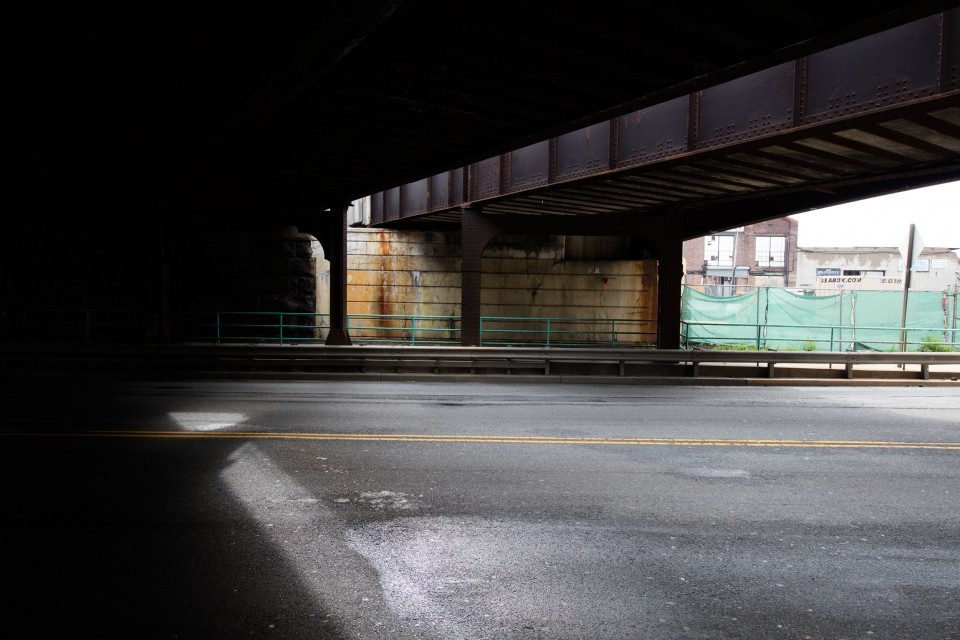 Before Before | 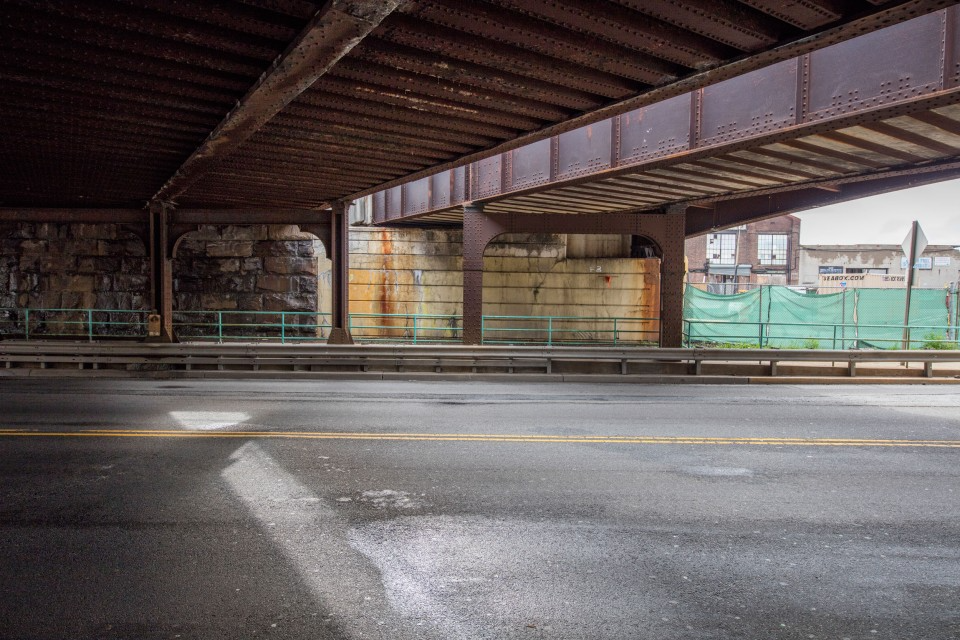 After After |
Now, comparing the two cameras side by side, I did find the 5DS R to provide a very slight, but noticeable, improvement when it came to sharpness. So users looking for maximum detail will definitely be better served with the “R” model.
Use and Handling
No surprises here. The body is practically the same as the 5D Mark III and handles in pretty much the same manner. The real updates come from the software side of things, and there are many.

A slice of creamy cheesecake taken with the 5DS
One of the best-implemented features is the crop modes. Since you are starting with 50 megapixels, cropping a bit (or a lot) will still give you excellent resolution. This is seen with the 1.3x (30MP) and 1.6x (19MP) settings available. Framing is also handled well, with the viewfinder automatically darkening the edges of the scene that are no longer included in the shot. There is a 1:1 setting that will allow users to set up shots very easily for square formats, or Instagram, without needing Live View or tethered capture.
Another benefit of these crop modes is better leverage of the autofocus system. When cropping, the 61-point system begins to fill the frame more and more, reaching almost complete coverage at 1.6x. This makes shooting action and other fast-moving subjects much more responsive and accurate.
The 150,000-pixel RGB+IR metering sensor also works wonderfully with accurate metering across the scene. I never had any issues with the camera becoming confused by very contrasty scenes. Also, when I put up an LED light I knew had flicker issues, I instantly got the readout in the viewfinder to tell me so. This Anti-Flicker Compensation setting will also delay the shutter in order to produce an image unaffected by the flicker of the light source.
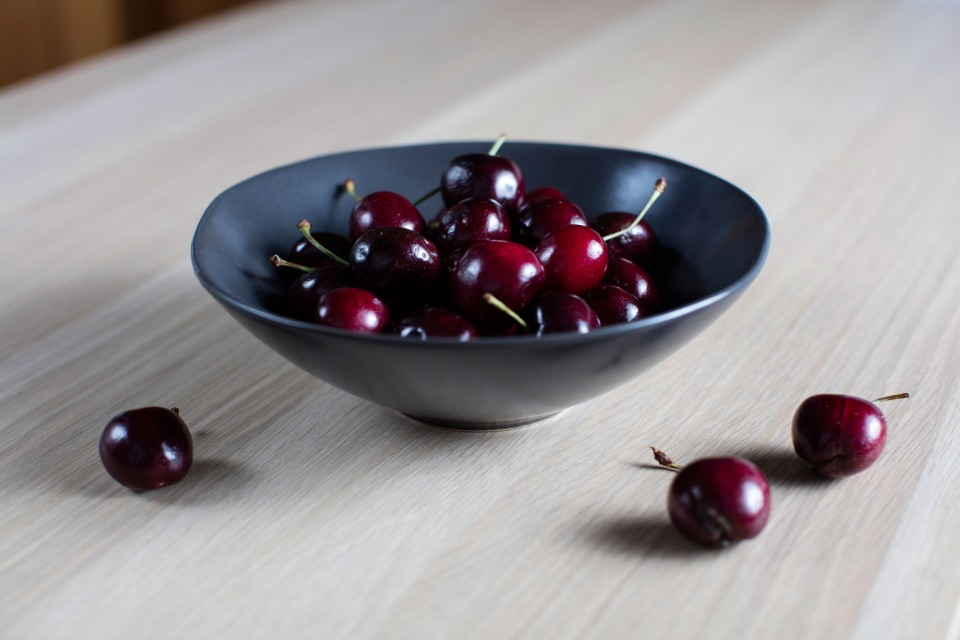
The 5DS R shows that life is just a bowl of cherries.
Much appreciated is the Quick Control Function Screen, which can be set up on your rear LCD. This screen shows you all of your settings and can now be programmed with nearly anything you want, wherever you want it. Combined with the My Menu screen, which can be set up with multiple tabs now, finding your most used settings should be a piece of cake.
White balance received an update, as well, with a new “White Priority” Auto WB setting. This setting is different from the standard “Ambience Priority” mode in that it will further reduce the intensity of light from tungsten sources. This works nicely for users looking for a truly color-neutral image but, I found that for portraits, it can remove some of the red from the skin, resulting in a less pleasing image.
Shooting Style and Lenses
Shooting with the high-resolution sensor is going to be a new experience for most, and there are a few things I found that need to be kept in mind. This is a very demanding piece of gear. My usual run-and-gun shooting appeared to be detrimental to my final image quality, as it looked softer than I anticipated. My usual 1/125- to 1/60-second shutter speed, with a 50mm lens, didn’t always seem to cut it. I rectified this by using a faster shutter speed or steadying myself. This is something to be expected since, when you have 50 megapixels, even the most minor movements can be detected.
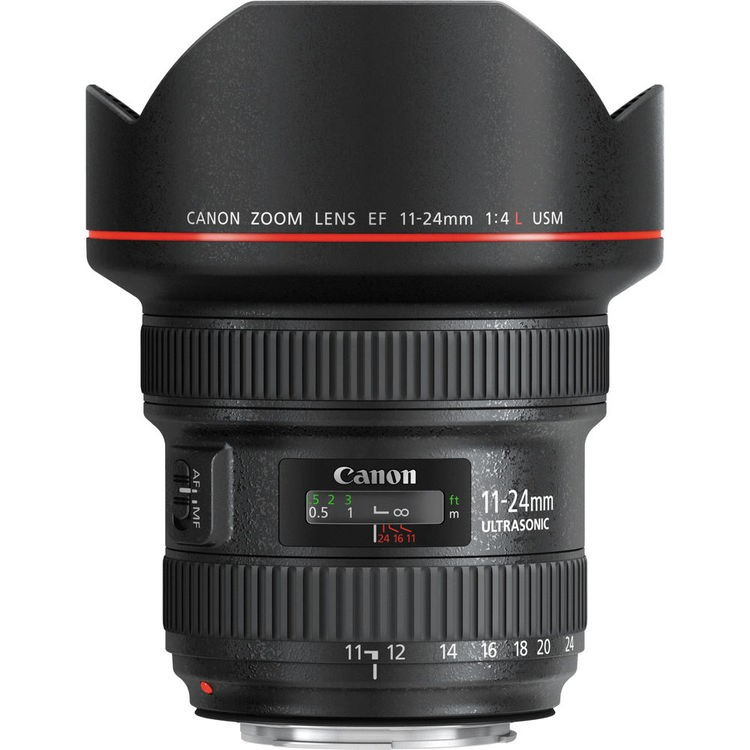
Lenses and aperture choice did lead to another realization during my time with the cameras. Shooting wide open for a softer look was a little disappointing when I checked the photos later on. It’s not even that it was a necessarily different look than had I shot it in a lower resolution, but the fact that it is 50 megapixels made me hesitate when I was selecting apertures on my ultra-fast lenses later on.
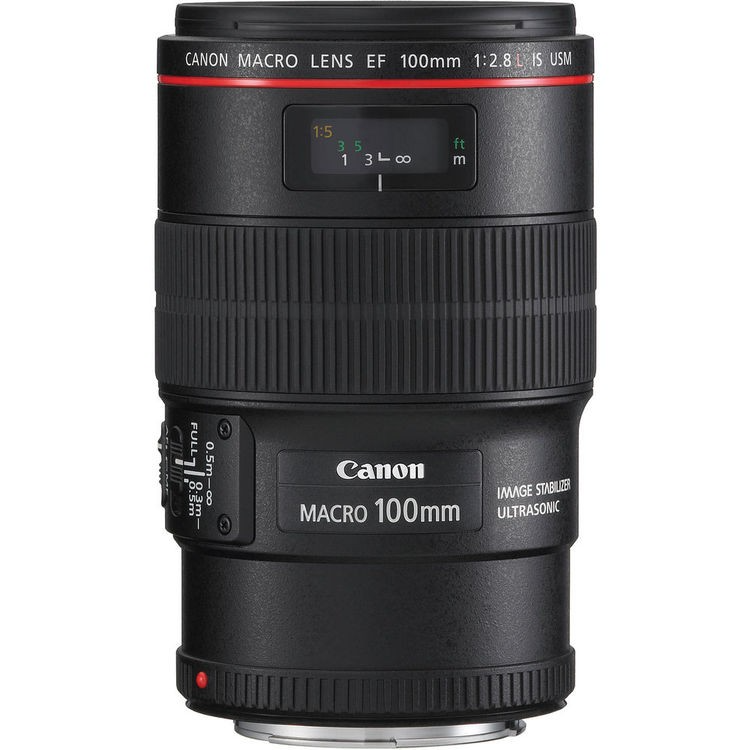
The 5DS and 5DS R also work in the opposite way; they make some lenses really shine. For this review I was provided with the just-released EF 11-24mm f/4L USM from Canon. This lens is being marketed as a perfect pairing for the two cameras, and I can definitely agree there. Shooting wide open, this lens was impressively sharp, and for landscapes and cityscapes, the range is unbeatable by any other full-frame zoom lenses on the market. Also, I used my own EF 100mm f/2.8L Macro IS USM lens for a variety of food shots and was very happy with the results.
Interval Timer, Time Lapse, and Video
A welcome addition to Canon DSLRs is a built-in interval timer, allowing you to set an interval from 1 second to 99 hours 59 minutes and 59 seconds, and set the number of shots from 1 to 99 or infinite. Time-lapse shooters will greatly appreciate having this system built in, as it no longer requires extra devices to keep powered and plugged into your camera. A time-lapse movie mode takes yet another step out of the equation with the automatic compiling of photos into a full HD video file.
Moving on to video features—this is not a video camera. Fifty-megapixel sensors are generally not well suited to creating 2-megapixel HD videos. On top of that, the camera is built and optimized for stills and lacks some more video-oriented features, such as a headphone jack. On that point, the images it creates are good. I didn’t have time to really put them to the test and see if the down-sampling will introduce some unpleasant moiré and aliasing but, for users just looking to shoot a quick video alongside their stills, they will not be disappointed.
Conclusion
Hybrid video and stills shooters will still be better served by the 5D Mark III, which is sticking around as part of the larger 5D family; the 5DS is not a replacement. Some photographers may even find a purpose for both in their gear bag, one for in the field and video, the other for studio or controlled environments. For users seeking maximum detail and who have a desire to print truly large images, the 5DS and 5DS R are at the top of the full-frame DSLR market.
Please note: The images in this article were taken with pre-production models.
